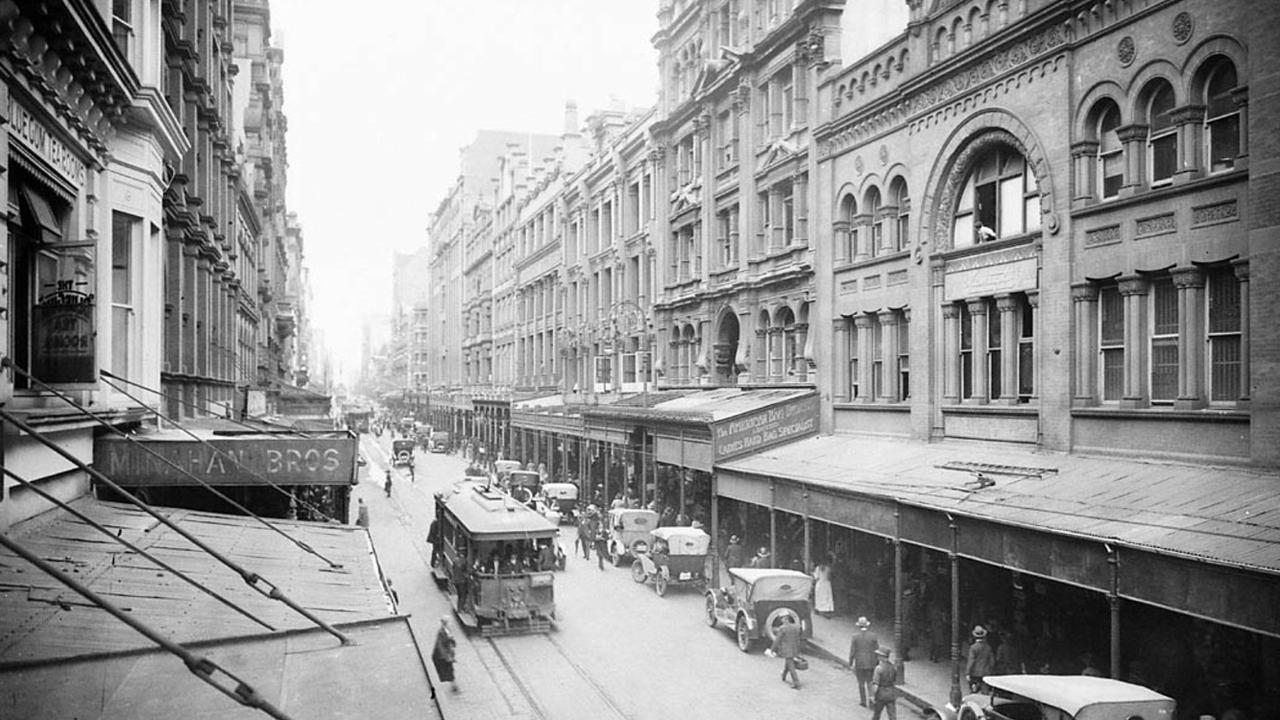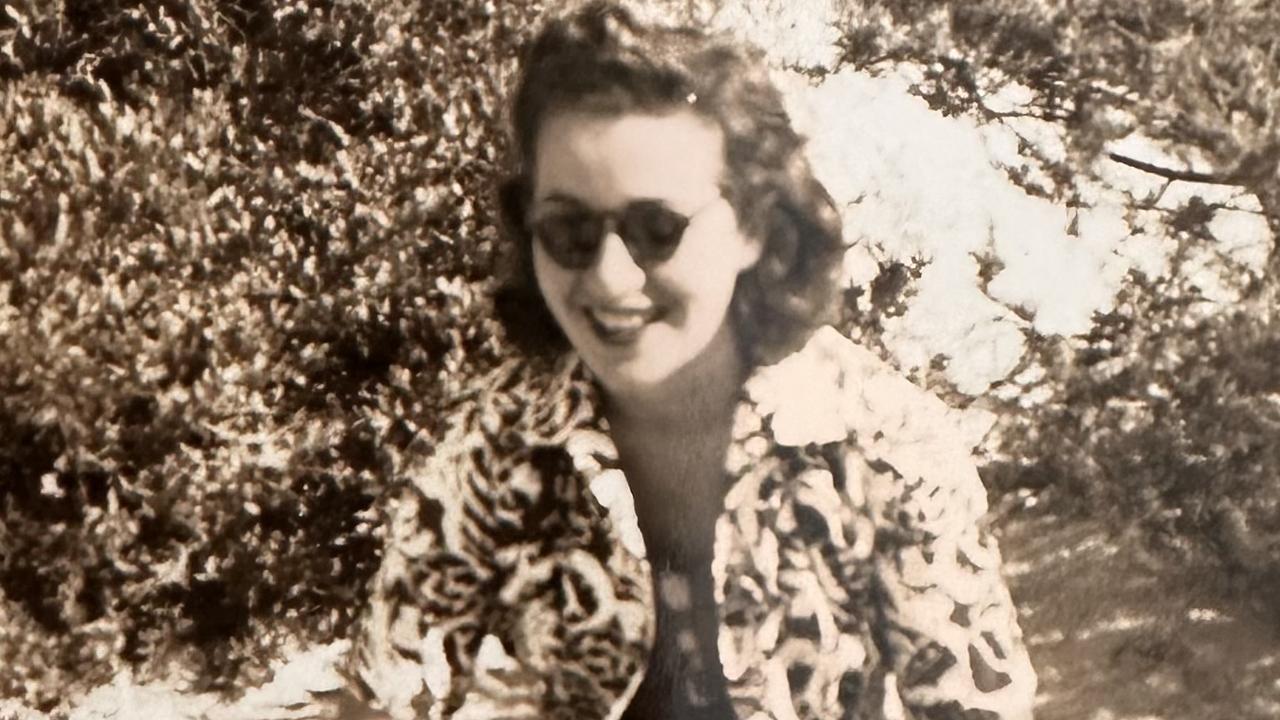Sydney Arcade ‘shopping centre’ opens for the first time in 1881
This city was a long way behind Melbourne when it came to embracing the joys of retail therapy where shoppers could find everything they wanted under one roof.

It was 3pm on a Monday in December 1881 when the fashionable ladies of Sydney experienced a shopping phenomenon – the city’s first arcade.
While exclusive shops had long existed for the upper classes to purchase jewellery, gowns, suits, haberdashery and accessories, never had these boutiques been located under one roof before.
Leading from King St into George St, Sydney Arcade was based on the fashionable arcades found in Melbourne and Europe. And on this opening day, a declaration was made by acting-governor Sir Alfred Stephen as musicians and singers entertained curious shoppers who paid one shilling to enter.
Newspapers noted the arcade “possesses the attractions of beauty combined with the advantages of comfort and convenience” and that the relatively new luxury of electric lighting was used.

University of Melbourne PhD student, Nicole Davis, who has undertaken a thorough study of 19th century Australian shopping arcades called A Fashionable Promenade, says this opening was an important step in establishing a civilised reputation for Sydney.
“The opening of the Sydney Arcade really built Sydney up,” Davis says.
“Sydney had needed this space in order to be considered a civilised world city. Melbourne had arcades for years already, their first was in 1853, so there was a real feeling that Sydney was overdue their first quality arcade.”
Once started, a string of similar arcades followed for Sydney, Davis says. Less than a year later, in November 1882, the Royal Arcade (where the Hilton Hotel stands today) opened, leading from Pitt St through to George St.
Both the Sydney and the Royal arcades were designed by architect Thomas Rowe, who took inspiration from the French and Venetian style of arcades in Europe.
The Central Arcade opened on George St in 1886, but it was gone by 1914, and the Victoria Arcade, with a frontage on Elizabeth and Castlereagh streets, opened in November 1887. Unlike earlier ones, this one featured an internal oval space surrounded by 15 shops and a glass dome above it.
The Imperial Arcade opened with a frontage on Pitt and Castlereagh streets in July 1891, which Davis says lasted until the 1960s when it was demolished and replaced with a new Imperial Arcade and which is now the Westfield Shopping Centre.


The last of Sydney’s grand early emporiums, unless you include the Queen Victoria Building from 1898, was The Strand leading from Pitt St to George St which opened in April 1892. It is the oldest one still in existence.
Pitt, George, King and Castlereagh streets made up the main shopping precinct in Sydney in the late 19th century, with tailors, hat and dressmakers, drapery and mixed business stores located here. But the arcades brought all of these stores under one roof, Davis says.
“The idea was that people who could afford to spend money could come to these arcades that were a bit classier,” she says.
“Shopping here was seen as an all-day event; at various times there were beauticians, hairdressers, tearooms and public toilets in these places and people would come from the country or the suburbs and shop in this precinct.
“It was called ‘doing The Block’ and it was a real outing.”
But, while we may have an idealised view that these were very refined spaces, and the arcade owners would have promoted them this way, they were also a place where pickpockets and thieves could be found, Davis says.
“If you’re a pickpocket, you will want to go to a place where there is a high concentration of wealthy people, and where better than these exclusive arcades?
“There are articles of thieves dressed nicely who go into jewellery stores to steal. They were beautifully built places but by the early 20th century they were a bit of a cesspit and there were many complaints of the smell that came from them and even that rats were seen there in the days of the bubonic plague.”
Got a local history story to share? Email mercedes.maguire@news.com.au

LONDON LEADS THE WAY
Shopping arcades date back to the 17th century in Europe. But the oldest one still in existence is the Royal Opera Arcade in St James’s, London.
Built in 1818, it featured a grand covered promenade with circular skylights above it and 19 shops along the western side, each with its own bay window for retailers to showcase their goods. It was designed by John Nash of Buckingham Palace fame.
The arcade survived fire, bombing during World War II and several demolition attempts to remain a fashionable shopping precinct today, albeit with just 18 shops, one less than when it opened.
LONG REIGN OF OUR QVB
Work on the site that was once Sydney’s original marketplace began in 1893. It would be five years before the Romanesque-style Queen Victoria Building — named in honour of the then-queen’s diamond jubilee — officially opened on July 21, 1898.
It had 58 shops on the ground floor, 17 larger rooms on the first floor for showrooms and offices and 12 larger rooms and a gallery on the second floor.
It also featured a concert hall for 500 people and the Coffee Palace hotel. It faced demolition in the mid-1900s, before a massive restoration in 1986 and further refurbishment in 2009 returned it to its former glory.
Flavoured history of ice cream in Australia
Take a moment to imagine the joy of tasting your first ever ice cream. For the residents of Manly in the early 1900s, the revolutionary frozen dessert would have been a true wonder.
Ice cream was not readily available in Australia yet so it’s no surprise the vanilla blocks Fred Peters was making in an old shed in the backyard of his Manly home were an instant hit.
And if his surname sounds familiar, it should.
American-born Frederick Augustus Peters arrived in Sydney in the late 1890s and, feeling homesick for his hometown, wanted to recreate the dairy dessert he so missed.
By 1907, Peters had perfected his mother’s recipe and he began selling his ice cream in the streets using a horse and cart.


So successful was his iced sweet, he soon had to lease two, small freezer rooms in an ice factory in Paddington and on August 27, 1907, Peters American Delicacy Co was launched.
If you’ve ever enjoyed a classic vanilla Drumstick, Choc Wedge, Monaco Bar, Maxibon or Billabong ice cream, this is where the tradition began.
Peters was born in Michigan in 1866 and moved to Sydney in the late 1890s. His ice cream business grew rapidly and by 1923 he opened a factory in George St, Redfern, with the ironic, yet catchy, slogan Peters – The Health Food of a Nation.
It’s a catchphrase that would be used into the 1970s when health and food regulations tightened.
By 1927, the company expanded into Brisbane under the name Arctic Delicacy Co and then to Melbourne where it would eventually be known as Petersville.
Part of the success of his company in the early days was due to the fact Peters found ways to deliver and sell a product that needed refrigeration in a time before domestic fridges were common in homes.


In the early years, Peters introduced small refrigerated cabinets which he hired to retailers who stocked his product. And when dry ice became available in the 1930s, Peters used the new technology to expand his business further.
“Our ice cream history has been influenced by American and Italian traditions,” says State Library of NSW curator Margot Riley.
“In the early 1900s, before home refrigeration, ice cream was bought directly from the manufacturer, delivered to customers by horse and cart or scooped fresh into a cup or cone by street vendors.
“In the 1930s, Peters American Delicacy Co. Ltd began offering customised ice cream desserts, ordered by phone for home delivery and packaged in dry ice to stay frozen for up to eight hours.
“The popular Neapolitan Brick came in two sizes, with its three layers (vanilla, strawberry and chocolate) arranged on top of each other to be cut into slices for serving.”
Ever the canny salesman, Peters always found new ways to promote his brand. In 1938 cricket legend Donald Bradman appeared on a poster eating a Peters ice cream cone and in 1947 the Peters Pals radio show attracted a national following with a prime time variety hour that included quizzes and talent quests. One of the show’s presenters was a young teenager named Bert Newton.

When television came to Australia in 1956, Peters Fun Fair Variety Show was launched in the first week of transmission.
The show featured clowns Zig and Zag who wore hats in the shape of an ice cream cone and tub emblazoned with the Peters logo. With a 13-year run, the program would be one of Channel 7’s longest-running television shows.
Decades later it was revealed the clown Zig, played by Jack Perry, was convicted of molesting his granddaughter.
Peters, who married four times, retired from the company in 1936 and died the following year at his home in Strathfield in Sydney’s west. He left an estate worth £56,439.
Peters, which has been headquartered in Melbourne since 1964, was taken over by the Nestle Group in the mid-1990s and it was bought by European company R&R in 2014. In 2018 it became part of the Paris-based Froneri company.
Got a local history story to share? Email mercedes.maguire@news.com.au

THE ORIGINS OF ICE CREAM
A mixture of milk and rice frozen in ice is believed to be the origin of ice cream, first enjoyed in China around 200BC. The Roman emperor Nero is said to have enjoyed snow flavoured with fruit and juice. And when Venetian explorer Marco Polo travelled to China in the late 1200s, he brought the idea for a frozen cream mixture back to Italy.
The first time a type of ice cream was made publicly available was when a Sicilian chef blended milk, cream, butter and eggs before freezing it and serving it to customers at a Paris cafe in 1660.
BEST IN THE WORLD
The most popular ice cream in the world is Magnum, owned by British/Dutch company Unilever. Coming in at No.2 is Haagen-Dazs, created in the Bronx, New York in 1960.
Meaning “little horn” in Italian, the Unilever-owned Cornetto comes in at No.3, followed by another brand now owned by Unilever, Ben & Jerry’s.
The top five is rounded out by Breyers, sold in Canada and the US and also owned by Unilever.
The Drumstick comes in at No.6, and while the Peters version was launched in Australia in 1963, the original Drumstick was invented in Texas in 1928.
Got a news tip? Email weekendtele@news.com.au





